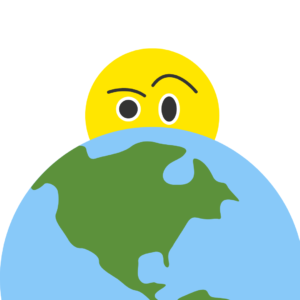Diversification – a closer look at current events
Diversification. We always stress the importance of being on the lookout for “what else” is moving now that the global markets are accessible by almost everyone. The US markets are following stress related trends with Nasdaq up over 4%, S&P up by 2.6%, Dow was up by 1.4% on the closing day of the Fed’s rate hike. Where the world is expecting a hard landing, the Feds take the 50 year low unemployment rate of 3.6% as a sign that the US is not going through a recession. “It doesn’t make sense that the economy would be in a recession with this kind of thing happening” said Fed Chairman Jerome. If we were to diversify, what options do we have?
Turbulent times – current risks to the global economy
Disruptions on supply chains from major events in different parts of the world resulted in flow restrictions of food, energy and technological advancements. Going back to the 2007-2009 financial crisis, which spread around the world and triggered a collapse in cross-border trade, to the pandemic, a horrific war and everything else in between – i.e a container ship blocking the Suez Canal (12% of global trade is handled by the Suez Canal which translates into a disruption of $9.6 billion worth of goods – according to an analysis by Bloomberg)

The war in Ukraine escalated geopolitical tensions. The world is not only dividing again into East/West but geopolitical tensions between any country that had scores to settle with another over the past half century, are amplified. Tensions are rising between the big and the small, the east and the west, the left and the right, the rich and the poor, the nuclear and “the other nuclear”.
Now combine:
- Geopolitical tensions
- Faster than expected tightening of financing (due to interest rate hikes) across the globe
- Covid related disruptions
…and you have a salad that doesn’t even taste like a salad. Confusing even to the best of us, our policy makers, who struggle with the thin line of doing too much/too fast or too little/too late. Like your mom’s casserole dish that is either not enough, or enough to feed 4 families.

Story for another day but past the interest rates, if stricter policies are implemented by dominant countries to combat the supply chain disruptions (like export bans, price controls or subsidies on essentials i.e. food/gas), we’re heading in a whole new direction. Deglobalization and/or regionalization (example of RCEP – Regional Comprehensive Economic Partnership signed in 2020 with 15 Asia-Pacific members pinky swearing their free trade agreement) are both gaining ground. More and more countries/regions turn inwards, to decrease their interdependence that globalization created over time. Germany is a current example for why deglobalization is a hot plate, but as I said it’s a story for another day.
What is Regionalization? The way that an area of the world containing several countries becomes more economically or politically important than its individual members.
Back to diversification. What is currently happening to the rest of the world (outside North America)? According to the World Bank:
East Asia and Pacific: Growth is projected to decelerate to 4.4% in 2022 before increasing to 5.2% in 2023. Europe and Central Asia: The regional economy is expected to shrink by 2.9% in 2022 before growing by 1.5% in 2023. Latin America and the Caribbean: Growth is projected to slow to 2.5% in 2022 and 1.9% in 2023. Middle East and North Africa: Growth is forecast to accelerate to 5.3% in 2022 before slowing to 3.6% in 2023. South Asia: Growth is projected to slow to 6.8% in 2022 and 5.8% in 2023. Sub-Saharan Africa: Growth is forecast to moderate to 3.7% in 2022 and rise to 3.8% in 2023.
 The global growth trend is on a downward spiral and although we would love to see the growth rate of emerging and developing countries growing faster than the advanced/developed countries, it’s not. No one likes the classifications developing / emerging / developed but this is the plate we’ve been served. If everyone says it’s a hot-dog, we can’t go around saying we’re serving lobster.
The global growth trend is on a downward spiral and although we would love to see the growth rate of emerging and developing countries growing faster than the advanced/developed countries, it’s not. No one likes the classifications developing / emerging / developed but this is the plate we’ve been served. If everyone says it’s a hot-dog, we can’t go around saying we’re serving lobster.
What is a developed country? A country that meets certain criteria relative to the quality of life of its citizens. Mature economy, GDP per capita, birth/death rates, political stability, industrialization, technological infrastructure, a financial sector integrated to the global financial system. The United Nations developed the HDI Index (Human Development) that classifies from 0-1, countries with the highest quality for its residents. Any score of 0.80 is considered developed. Anything lower is developing.
Examples of developed countries include Norway, Switzerland, Ireland, Hong Kong, Iceland, Germany, Sweden, Australia, Netherlands, Denmark, Singapore, US, Finland and many more – Cyprus is somewhere in there too, I promise.
Why invest in a developed country?
Due to lower risk of economic and political instability, analysing potential returns can be more accurate. Tensions between nations are constant but there’s still a degree of safety compared with less developed countries. Also, the more developed a country is, the stricter its regulations are ensuring more accurate reporting and book keeping. A broad categorization we see in ETFs include Europe, Australasia and Far East (EAFE).
Currently we see contraction throughout the EU area with Italy, Spain, Sweden PMI Composites lower, FTSE 100 lower, Italian FTSE MIB Stock index lower, Madrid’s IBEX 35 index supported by listed bank’s gains, Australian ASX 200 retreating from 7 week highs as cost of living pressures slowly deplete spending power, New Zealand’s NZX 50 up by 1.5% although its jobless rate ticked up in Q2 2022, Singapore/Hong Kong’s private sector growing amid sustained COVID 19 recovery although rising living costs are dropping people’s confidence.
What is an emerging country? A country with considerable economic growth that has some (but not all) the characteristics of a developed country. It’s said to be in transition from developing to developed. Knock-knock. Who’s there? BRIC. BRIC who? Exactly
Quick Note: nothing against the other acronyms coined over the years like RDEs, CIVETS, MINT, Next Eleven (N-11). We’re mentioning the BRICS as a diversification example (with current news worth mentioning).
BRIC is a political and economic grouping of the world’s leading emerging market economies created in 2009. It initially comprised of Brazil, Russia, India and China. With the addition of South Africa in 2010, the organization came to be known as the BRICS. If you thought the EU was heavily populated with under half a billion, think of BRICS having a little over 3 billion people working, producing, procreating (what-what), influencing.
The BRICS nations saw the need for a new financial institution resembling the IMF which materialized into the BRICS Development Bank (or New Development Bank – NDB) – established in 2014 with an initial capital of $50 billion and headquartered in China.
Russia announced in June 2022, that a new global reserve currency (resembling the IMF’s SDR) is in discussion to be comprised by Real, Rubles, Rupees, Renminbi and Rand.
What is an SDR? The Special Drawing Right is a reserve asset created to be exchanged with other reserve assets of member countries at times of need. Comprised of USD, JPY, EURO, Chinese RMB, GBP with different weightings adjusted by each currency’s current prominence. If an IMF member country needs liquidity, it can exchange its SDRs for useable currencies held by other members. Their SDR holdings go down but they get liquidity in the currencies required to meet balance of payment, add to their own reserves, pay IMF loans or add to their quota increases. If countries hold onto their SDRs they earn interest. They also pay interest on their cumulative allocations at the same rate.
Note: A mammoth $650 billion allocation of SDRs was approved in 2021 to support the IMF members in their battle against the pandemic, especially the most vulnerable ones.

Why invest in an emerging market? Because of the potential for high growth. We know that changes in the US economy tend to travel to the rest of the world. Will it be the same moving ahead with more raised eyebrows on globalization?
We currently see the Brazilian Bovespa index (Ibovespa) closing a bit higher, boosted by commodity linked stocks, bank stocks, web services (although its industrial output in June showed contraction), we see Russian Stocks extending decline with the MOEX index closing lower with forecasts for an even larger GDP contraction, Colombia’s exports of fuel, coal, briquettes, agriculture rising to $5.5 billion (Colombia has an HDI of 0.767 that meets most criteria of a developed country but is sill classified as an emerging market. Major exporting partners are the US, the Netherlands, Panama and India). India’s trade deficit continues to grow due to increase in fossil fuel imports while BSE Sensex calms down with Kotak Mahindra Bank boosting the index higher along with “Better food for more people” Zomato’s corporate earnings. Indonesia’s Bank Mandiri releasing increased earnings (Indonesia is emerging as a confident middle income country).
So what is a developing country? A country that has a low per capita income. Characterized by lower quality of life for its residents, it could be a country with less access to safe drinking water, poor quality infrastructure, no potential for technological advancements, diseases, and energy deficiencies, no regulatory oversight.
Because of no regulatory oversight, it’s very hard to develop an equity market (known to push and accelerate growth). Therefore, news relating to developing countries will be relevant to their exports/imports, inflation rates, and other economic indicators. Randomly picked examples are Uganda’s inflation rising to 7.9% (mainly due to food, transport, furnishings), Sri Lanka posting a trade surplus from exports in textile and garments, industrial products or Zimbabwe inflation reaching a staggering 257%.
There’s so much more to talk about, relevant to diversification. Morningstar’s portfolio strategists are comparing diversification to insurance (it has a cost and might not always pay off, but when it does you’re glad you had it). Diversification comes in many sizes and forms. We barely scraped the surface here by looking into country classifications. One article at a time we will be looking into jumping from asset to another asset class, assets within their own asset classes, regions, sectors, funds, portfolio allocations like the 60/40 (which might need some calibration due to the current state of global economy – although there are other ways to avoid a DIY portfolio by targeting balanced funds, or target date funds whose allocation shifts as time for needing the money comes closer).
Stay tuned!
